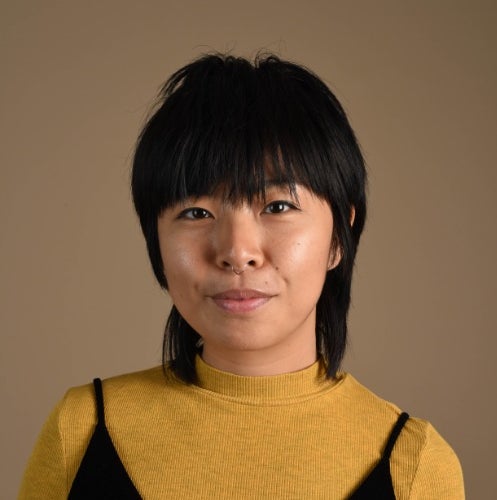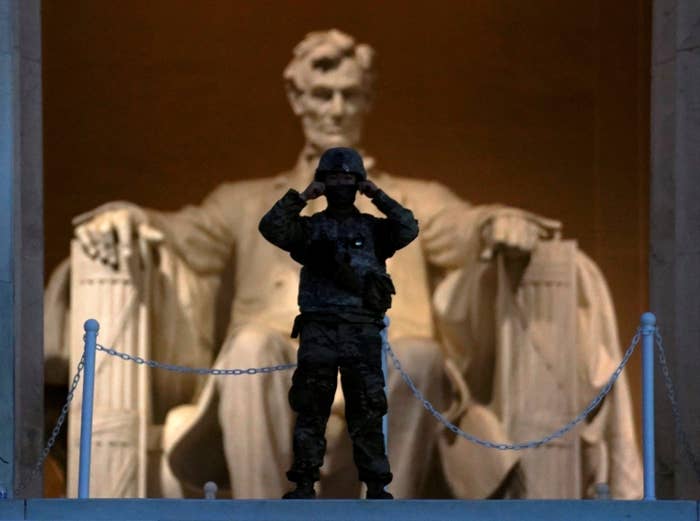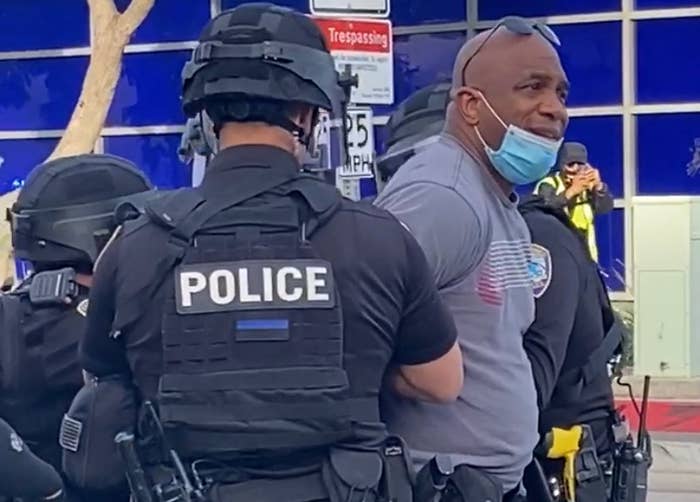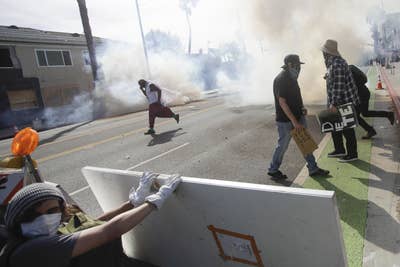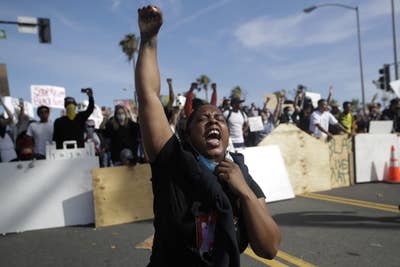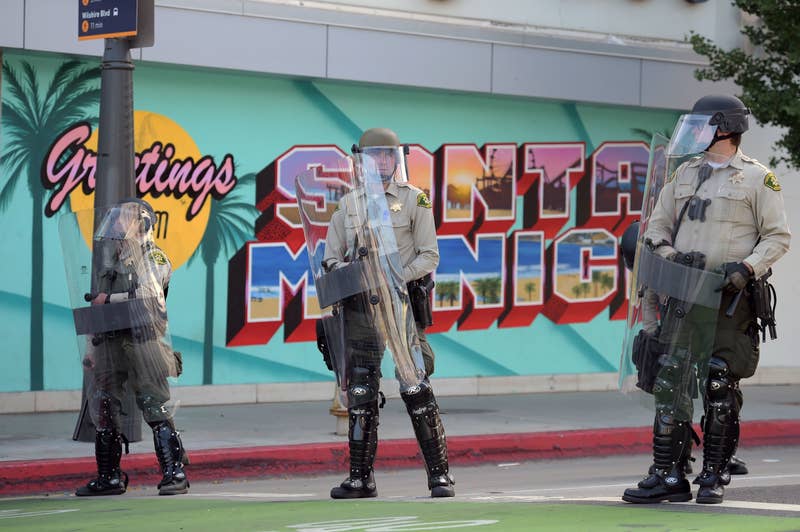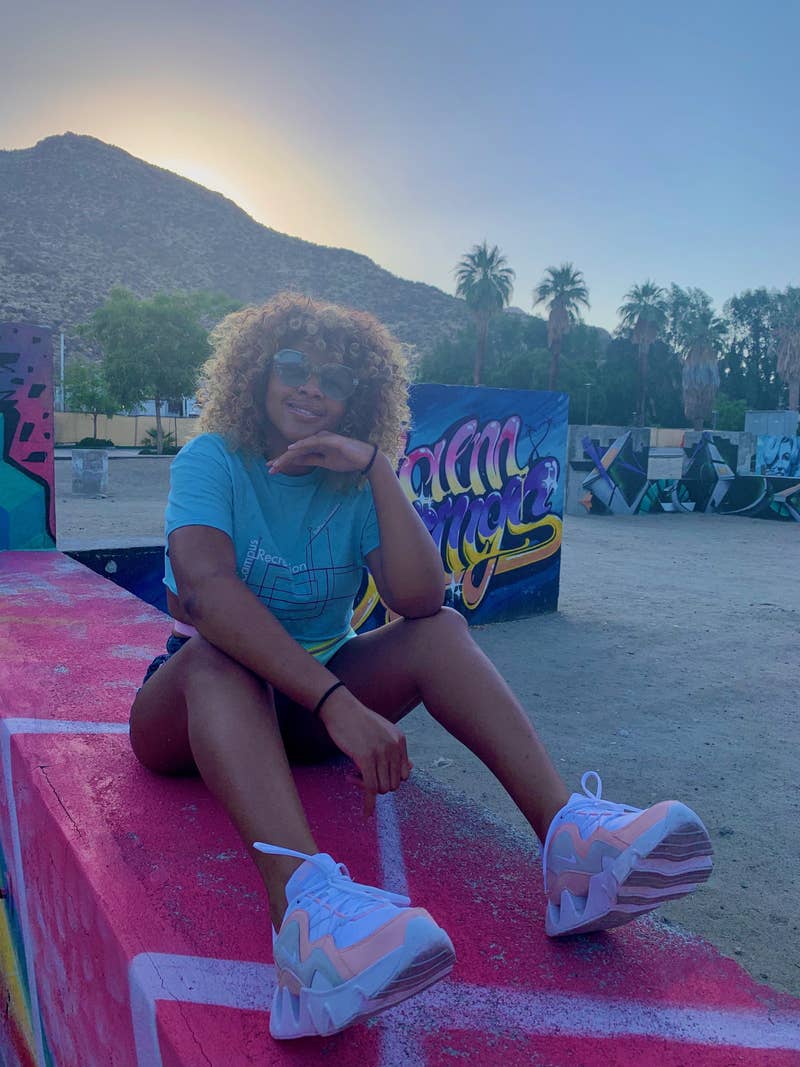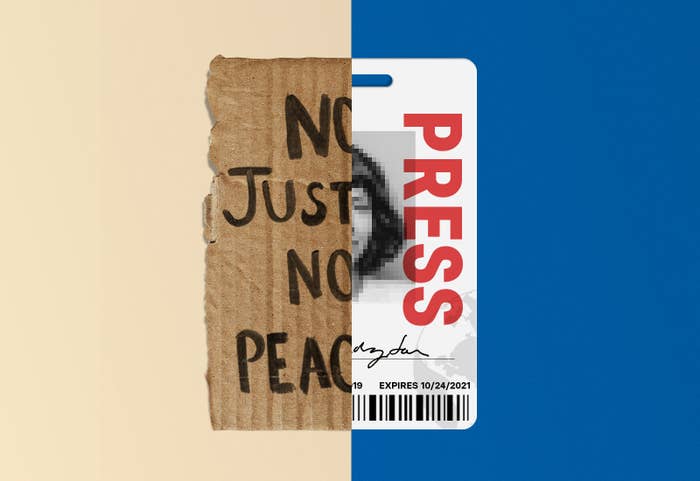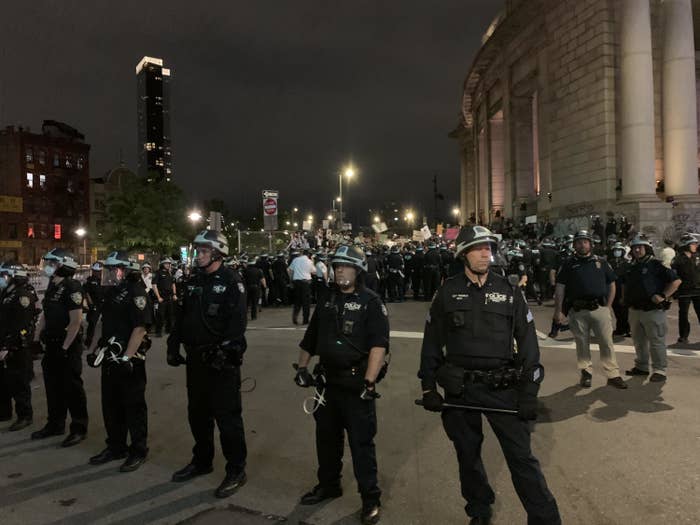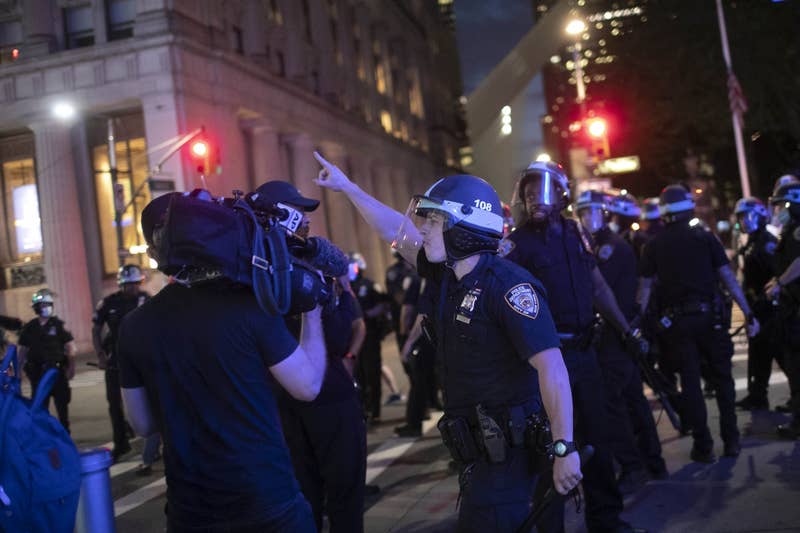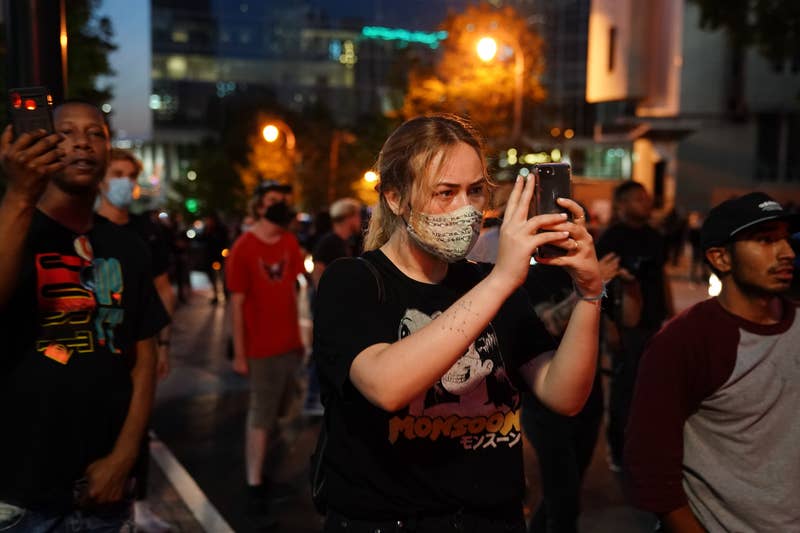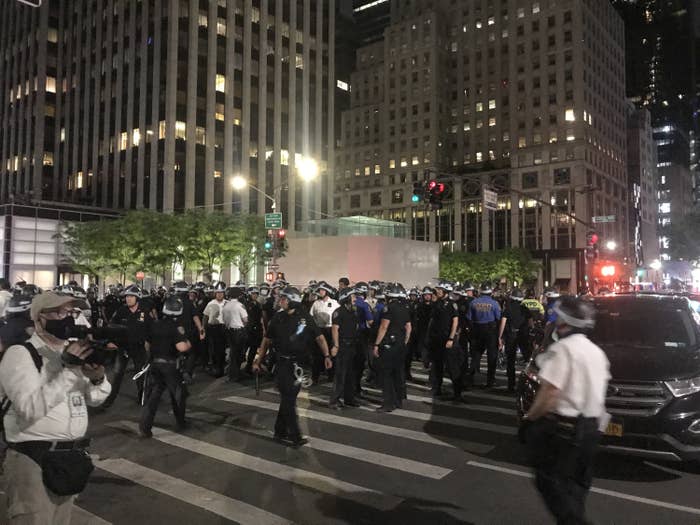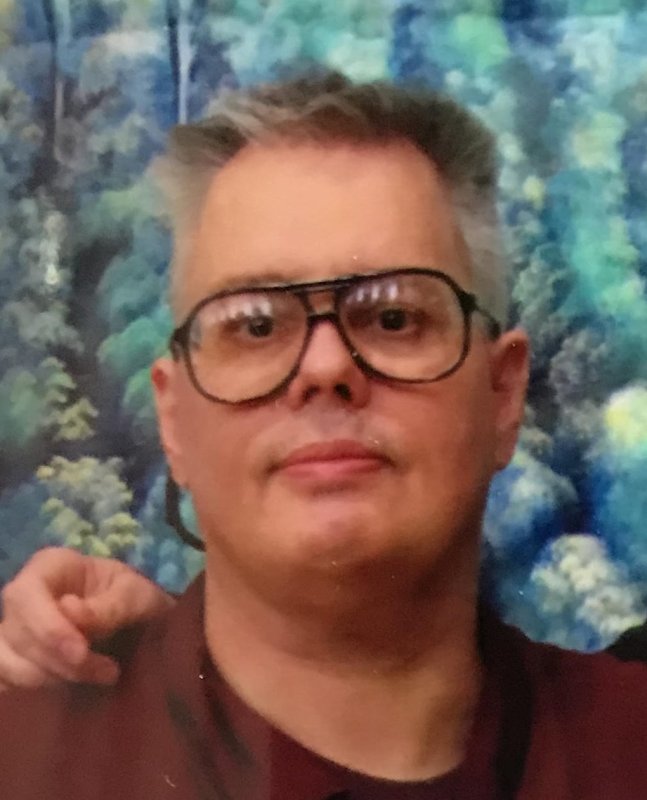A University Is Under Fire After A Professor Tweeted About Comparing The "Behavioral Profile" Of Black Americans To Asian Americans
Current University of Central Florida students and faculty are calling for professor Charles Negy's termination.
Tanya ChenBuzzFeed News Reporter
Posted on June 5, 2020

Charles Negy@CharlesNegy
Sincere question: If Afr. Americans as a group, had the same behavioral profile as Asian Americans (on average, performing the best academically, having the highest income, committing the lowest crime, etc.), would we still be proclaiming "systematic racism" exists?09:42 PM - 03 Jun 2020
Reply Retweet Favorite
The University of Central Florida is being forced to respond after one of its professors of psychology posed a racist question on Twitter, asking if systemic racism would "exist" if "Afr. Americans as a group had the same behavioral profile as Asian Americans."
School officials, including UCF's president Alexander Cartwright, released a statement this week saying they "condemn" professor Charles Negy's tweet "in the strongest terms," and they've launched an investigation.
However, despite huge calls for action by both students, alumni, and other faculty members, Negy is still an active professor, a spokesperson for the school confirmed to BuzzFeed News.
On Wednesday, Negy tweeted, "If Afr. Americans as a group, had the same behavioral profile as Asian Americans (on average, performing the best academically, having the highest income, committing the lowest crime, etc.), would we still be proclaiming 'systematic racism' exists?"
The tweet remains up and has drawn a ratio of loud and angry responses.
Many of them are from current and former students, some of whom identified as Asian American. They wrote back to Negy, laying out all the reasons why his tweet is ignorant and steeped in racism.

「 adrian 」@aaydurian
@CharlesNegy As an Asian American student attending UCF, I am deeply angry at this message perpetuating the model minority myth to deny the injustices against Black communities. NEVER proclaim monolithic APIDA experiences again until you have learned about systemic racism02:22 AM - 04 Jun 2020
Reply Retweet Favorite
Many quickly called out the "model minority myth," or the flawed logic often used toward Asian Americans as a racial wedge between them and other minority groups.
"As a student that goes to @UCF, an Asian American student, I am deeply offended that this UCF Psychology professor is using the minority model myths and stereotypes to invalidate the injustice and systemic racism that Black communities face daily," user @cailiboone9 wrote.
BuzzFeed News has reached out to some of the students and alumni who are responding, as well as Negy.
User @aaydurian, a current junior at the school, told BuzzFeed News that instances like this are nothing new for students of color on campus. She just hopes that the school can take a firmer stance this time.
"I hope to see UCF truly stand against anti-racism by removing [Negy] of his position and creating specific student government agencies for Black, Asian, and Hispanic students to educate our student body on racial identities and provide more platforms and funding for our cultural student organizations," she said.
Some who've identified themselves as Negy's fellow faculty are expressing their outrage as well. "We must do better for our students," one wrote.

Rob Dvorak@rob_dvorakPhD
As a psych prof @UCF let me say that the ignorance by my colleague is unacceptable. It’s even more unacceptable that he teaches a course requiring racial sensitivity and self-awareness. I’m ashamed to be associated with my dept rn. We must do better for our students. #UCFfirehim04:02 PM - 04 Jun 2020
Reply Retweet Favorite
The hashtag #UCFfirehim is being used with a clear message from those affiliated with the school: They want Negy fired.
When reached, Heather Smith, the director of the school's media relations, provided BuzzFeed News with a transcript of a recent town hall meeting between the school's president and top officials and its students.
The town hall was previously scheduled for COVID-related discussions, "however, university leadership also took the opportunity to address Dr. Negy’s tweets," Smith said.
"These posts do not reflect the values of UCF, and I strongly condemn these racist and abhorrent posts. I understand the anger it has caused many of our students, staff, and faculty," Cartwright said. "I promise you this is a matter that has our full attention, and we have launched an inquiry to quickly – but fully – evaluate this situation."
According to the transcript, Cartwright said he wants to "learn from [students'] experiences" and added, "I want to ensure you that Black Lives Matter."

beep boop not a bot (Sam)@blipbloop9001
@CharlesNegy As a former UCF cross cultural psychology student of yours, shut up. @ucf @ucfdoi @UCFCartwright It is embarrassing this guy is part of your faculty and was allowed to teach a class like that with these beliefs03:49 AM - 04 Jun 2020
Reply Retweet Favorite
Beyond the school's immediate community, Negy's tweets have drawn all kinds of other responses. Many of them from Twitter users who felt compelled to educate an educator.

Paul Krueger@NotLikeFreddy
@CharlesNegy -America was built specifically on a foundation of anti-Blackness -America has built system after system specifically to keep down Black Americans -we Asians don’t fit into the nonsense Model Minority myth you’re peddling -Asian and Black luminaries still experience racism04:03 AM - 04 Jun 2020
Reply Retweet Favorite

readwithcindy 💩@readwithcindy
Putting Asians as the "model minority" to justify the mistreatment of black people is disgusting. We're not here for you to pit us against another group and erase our struggles while dismissing another. https://t.co/OjEtlkEgQz05:09 PM - 04 Jun 2020
Reply Retweet Favorite
Actor Ken Jeong even responded to Negy, simply tweeting, "Go Fuck Yourself."

Ken Jeong@kenjeong
Sincere response: Go Fuck Yourself. Love, Ken Jeong, MD https://t.co/oHRrP6aDsP05:01 AM - 04 Jun 2020
Reply Retweet Favorite

Tanya Chen is a social news reporter for BuzzFeed and is based in Chicago.
Posted on June 5, 2020

Charles Negy@CharlesNegy
Sincere question: If Afr. Americans as a group, had the same behavioral profile as Asian Americans (on average, performing the best academically, having the highest income, committing the lowest crime, etc.), would we still be proclaiming "systematic racism" exists?09:42 PM - 03 Jun 2020
Reply Retweet Favorite
The University of Central Florida is being forced to respond after one of its professors of psychology posed a racist question on Twitter, asking if systemic racism would "exist" if "Afr. Americans as a group had the same behavioral profile as Asian Americans."
School officials, including UCF's president Alexander Cartwright, released a statement this week saying they "condemn" professor Charles Negy's tweet "in the strongest terms," and they've launched an investigation.
However, despite huge calls for action by both students, alumni, and other faculty members, Negy is still an active professor, a spokesperson for the school confirmed to BuzzFeed News.
On Wednesday, Negy tweeted, "If Afr. Americans as a group, had the same behavioral profile as Asian Americans (on average, performing the best academically, having the highest income, committing the lowest crime, etc.), would we still be proclaiming 'systematic racism' exists?"
The tweet remains up and has drawn a ratio of loud and angry responses.
Many of them are from current and former students, some of whom identified as Asian American. They wrote back to Negy, laying out all the reasons why his tweet is ignorant and steeped in racism.

「 adrian 」@aaydurian
@CharlesNegy As an Asian American student attending UCF, I am deeply angry at this message perpetuating the model minority myth to deny the injustices against Black communities. NEVER proclaim monolithic APIDA experiences again until you have learned about systemic racism02:22 AM - 04 Jun 2020
Reply Retweet Favorite
Many quickly called out the "model minority myth," or the flawed logic often used toward Asian Americans as a racial wedge between them and other minority groups.
"As a student that goes to @UCF, an Asian American student, I am deeply offended that this UCF Psychology professor is using the minority model myths and stereotypes to invalidate the injustice and systemic racism that Black communities face daily," user @cailiboone9 wrote.
BuzzFeed News has reached out to some of the students and alumni who are responding, as well as Negy.
User @aaydurian, a current junior at the school, told BuzzFeed News that instances like this are nothing new for students of color on campus. She just hopes that the school can take a firmer stance this time.
"I hope to see UCF truly stand against anti-racism by removing [Negy] of his position and creating specific student government agencies for Black, Asian, and Hispanic students to educate our student body on racial identities and provide more platforms and funding for our cultural student organizations," she said.
Some who've identified themselves as Negy's fellow faculty are expressing their outrage as well. "We must do better for our students," one wrote.

Rob Dvorak@rob_dvorakPhD
As a psych prof @UCF let me say that the ignorance by my colleague is unacceptable. It’s even more unacceptable that he teaches a course requiring racial sensitivity and self-awareness. I’m ashamed to be associated with my dept rn. We must do better for our students. #UCFfirehim04:02 PM - 04 Jun 2020
Reply Retweet Favorite
The hashtag #UCFfirehim is being used with a clear message from those affiliated with the school: They want Negy fired.
When reached, Heather Smith, the director of the school's media relations, provided BuzzFeed News with a transcript of a recent town hall meeting between the school's president and top officials and its students.
The town hall was previously scheduled for COVID-related discussions, "however, university leadership also took the opportunity to address Dr. Negy’s tweets," Smith said.
"These posts do not reflect the values of UCF, and I strongly condemn these racist and abhorrent posts. I understand the anger it has caused many of our students, staff, and faculty," Cartwright said. "I promise you this is a matter that has our full attention, and we have launched an inquiry to quickly – but fully – evaluate this situation."
According to the transcript, Cartwright said he wants to "learn from [students'] experiences" and added, "I want to ensure you that Black Lives Matter."

beep boop not a bot (Sam)@blipbloop9001
@CharlesNegy As a former UCF cross cultural psychology student of yours, shut up. @ucf @ucfdoi @UCFCartwright It is embarrassing this guy is part of your faculty and was allowed to teach a class like that with these beliefs03:49 AM - 04 Jun 2020
Reply Retweet Favorite
Beyond the school's immediate community, Negy's tweets have drawn all kinds of other responses. Many of them from Twitter users who felt compelled to educate an educator.

Paul Krueger@NotLikeFreddy
@CharlesNegy -America was built specifically on a foundation of anti-Blackness -America has built system after system specifically to keep down Black Americans -we Asians don’t fit into the nonsense Model Minority myth you’re peddling -Asian and Black luminaries still experience racism04:03 AM - 04 Jun 2020
Reply Retweet Favorite

readwithcindy 💩@readwithcindy
Putting Asians as the "model minority" to justify the mistreatment of black people is disgusting. We're not here for you to pit us against another group and erase our struggles while dismissing another. https://t.co/OjEtlkEgQz05:09 PM - 04 Jun 2020
Reply Retweet Favorite
Actor Ken Jeong even responded to Negy, simply tweeting, "Go Fuck Yourself."

Ken Jeong@kenjeong
Sincere response: Go Fuck Yourself. Love, Ken Jeong, MD https://t.co/oHRrP6aDsP05:01 AM - 04 Jun 2020
Reply Retweet Favorite

Tanya Chen is a social news reporter for BuzzFeed and is based in Chicago.



